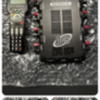I recently bought MTH DCS. My question is how do I add this to my layout. Is it as simple as adding that single wire I bought to link my TMCC>DCS or is there more to that?
Replies sorted oldest to newest
There is more to it than that. How big is your layout
@Diego posted:I recently bought MTH DCS. My question is how do I add this to my layout. Is it as simple as adding that single wire I bought to link my TMCC>DCS or is there more to that?
Small layout between my bedroom and spare room. Both rooms are 10x10 and the tracks travel through doorway to other room. Layout has two loops. Four feeders, two feeders per loop. One feeder in each room. Feeders are connected to my MTH 50-1014. The wires that power my 50-1014 are connected in my TMCC Direct Lockon.
Well, first step is to get rid of the TMCC Direct Lockon! That will seriously degrade the DCS signal!
@gunrunnerjohn posted:Well, first step is to get rid of the TMCC Direct Lockon! That will seriously degrade the DCS signal!
What does the 180w Power brick Connect to if I remove Lockon? Inside the DIRECT LOCKON it has a special plug that the 180w power supply plugs into. Also what protects the track against derailments? When I derail a train the direct lockon automatically cuts off power to track. The Lockon protects against any type of shorts.
The Powerhouse 180 has an excellent circuit breaker, it's all I use for my layout. Quite frankly, I'd rather trust that breaker than the TMCC Direct Lockon that continually bangs the short until you find it. The PH180 breaker opens until you manually reset it or you cycle the input power to the brick. You can use a simple jumper cable with the correct connector to directly connect the PH180 to wherever it has to be connected.
Since you are starting out with DCS, one of the things you surely don't want to have is a device on the layout that whacks your DCS track signal, right? ![]()
Here's my power panel, not TMCC Lockon in sight. I run Legacy and DCS with no issues at all.

Attachments
Read the manual that came with the DCS. (Passive mode) may be the easiest install for an existing TMCC layout.
If you're just starting off with DCS, I'd strongly suggesting Barry Broskowitz's DCS Companion book. About $30 but worth every penny. To answer your "how do I add this to my layout" question, without seeing your layout, I'm assuming you'd connect one TIU channel to each loop. You have to decide whether you want to use the two variable voltage channels (which enable you to control track voltage which allows for conventional operation) or the two fixed voltage channels (which come up in 18V preventing use of conventional engines).
Connect a 180W brick to each channel's input side, then each loop's bus wires (hot and common) to the output side. Then connect the TIU to the TMCC command base and a single wire from the command base to an outer rail of the layout. You only need to connect the TIU to the TMCC command base if you want to use the DCS remote for TMCC engines. If you want to simply use the CAB-1 for TMCC engines, you can leave the TIU and command base disconnected from each other.
Lastly, most DCS aficionados suggest star or homerun wiring rather than bus wiring with feeder loops like you have. I've also read others say that bus wiring works just fine. Start with what you have, see if you get a good signal and, if not, you may have to run you feeder connections back to a 50-1014 DCS power distribution terminal. With this device, you connect the output to the terminal and then you feeders to it. No bus in a star/homerun wiring scheme.







